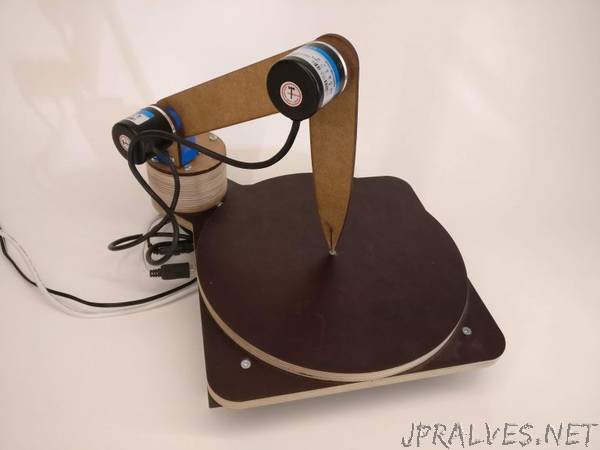
“For a long time I wanted to make a device that allowed non-digital people to enter physical measurements for digital production. While using some cheap quadrature encoders for a servo control system I realized that these encoders are useful for measuring angles. At first I thought about building a structure with a X,Y- and Z axis, much like a 3D printer with the stepper motors replaced with these encoders. By moving the “print head” to different locations and reading the position of the encoders the X,Y and Z position of the head could be resolved.
Realizing that this Cartesian approach would be quite complicated to build I sought after a simpler solution. I found that if I used the encoders as both sensors and structural bearings in a polar construction I could end up with a much simpler construction:
The measurement arm has three articulated joints. Each joint consists of an encoder in turn connected to an Arduino. The respective angles of each encoder can be read by the Arduino. The base table of the system also has a turntable with its own encoder.
From encoders to angles
A quadrature encoder outputs two signals. Depending on the resolution of the encoder each signal (channel) will output a number of impulses per revolution of the encoder shaft. The phase relationship of the two signals allow an external circuitry (an Arduino in this case) to determine the direction of rotation. By combining the direction and number of pulses it can be determined how far the encoder shaft has turned. An quadrature encoder can be thought of as a reverse stepper motor.”
